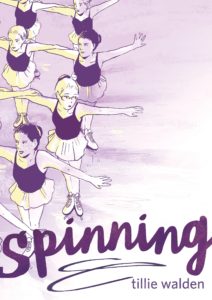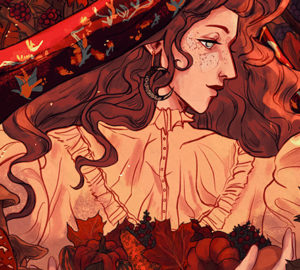Tillie Walden’s ‘Spinning’ is a story worth dancing to
by Masha Zhdanova

Award-winning graphic novelist Tillie Walden published her new book, “Spinning,” Sept. 14. At 400 pages, “Spinning” is the longest, traditionally-published work produced by Walden. This is also Walden’s first graphic memoir in which she chronicles her adolescence in the world of competitive figure skating and how that affected and intersected with the rest of her life.
Walden’s strengths have always been her use of silence and compositions created to evoke moods and feelings. Some panels have fully detailed drawings of the rink and the mall to set the stage, while others are a solid color with a line of handwritten text, offering whatever the moment needs.
There is a level of abstraction and fabulism present in all of Walden’s comics, and Spinning is no exception. On several pages, she draws herself morphing in and out of skating diagrams and the dark purple of her bedroom at night turning into stars. Her sense of timing is as impeccable as ever, using a variety of panel sizes to slow the narrative down or speed it up as necessary.
In “Spinning,” Walden goes for a more limited color palette than she usually uses, with a single hue of blueish-purple occasionally punctuated with a warm yellow light. This creates a feeling of harmony and unites all 400 pages into a cohesive narrative. “Spinning” is also more traditional in its layout than other works, such as her webcomic, “On A Sunbeam,” where panels frequently bleed into one another and affect each other’s shape. By limiting her visual palette this way, Walden keeps the long and involved story coherent and understandable.
Walden’s decision to include events that don’t seem to be connected to her skating help make the story feel more well-rounded and show how competitive skating impacted every aspect of her life. The story is focused on the author’s attempt to exert precision over a life she doesn’t feel happy with, and it does get fairly dark at times. Yet there are moments of happiness and the emotional journey feels satisfying by the end of the story.
The only minor complaint coming from “Spinning” is that due to the way some of the characters are drawn, it may be easy to mix up some faces. This likely has to do with the fact that Walden has claimed that she did not use photo reference for the people or places in her memoir, rather relying on the emotional truth to drive the story.
At the end, “Spinning” is a solid recommendation across the board. Its well thought out story, brilliant color palette and storytelling choices make this a good one to check out for those looking for something a bit different from other graphic novels.






















